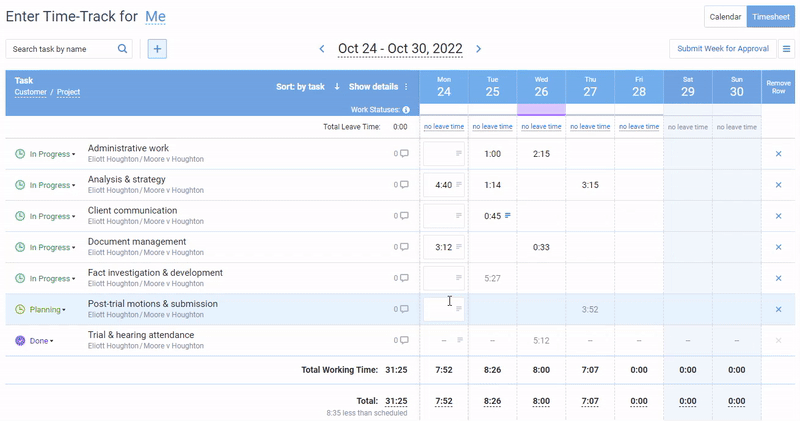
If you’re an architect, you already know that every project involves a lot of planning and organization to ensure it gets off the ground (and stays there). But do you have all the tools necessary to properly create an accurate architecture project timeline?
Some professionals still rely on desk planners or paper-based systems. But if you’re looking for something more efficient, consider using our architectural project schedule template. Not only will it help to keep your projects organized and running smoothly, but it can also bring order to even the most daunting building endeavor.
Keep reading to learn more about how incorporating such a template into your workflow can take some of the stress out of work.
What Is an Architecture Project Schedule?
An architecture project schedule is much more than a mere sequence of consecutive steps – it paints the entire picture. It offers an integral view of each task and milestone expected to be fulfilled by the end of the project and helps teams identify the connections between all elements of the initiative.
A detailed architecture project timeline facilitates potential adjustments throughout the course of specific activities when needed and keeps stakeholders informed on possible delays or advances in team achievements. It is a very useful asset for architects and their teams as it allows them to remain organized, synced, and accurate in meeting deadlines while turning their architectural vision into reality.
5 Tips on How to Create a Perfect Architecture Project Schedule
🎯 Define your project scope
Project scope is all about establishing clear parameters and setting expectations, laying out exactly what shall be accomplished. It’s a crucial step in any creative process as it helps keep everyone on the same page and, more importantly, maintain a sense of responsibility.
Defining your project scope involves getting down to the nitty-gritty of what is actually needed from beginning to end – from general goals and objectives to more specific project activities, deliverables, and costs they entail. Without this, it’s easy to get overwhelmed with all of the possibilities within a given project, but by putting clear boundaries in place, you will keep your focus from wandering.
📝 Make a list of tasks
So, you know your project scope. Now it’s time to get organized and make the invisible tasks become tangible. The best way to approach this is by breaking down all the work that needs to be completed.
Your list of tasks should include absolutely everything from such routine activities as regular meetings and procurement of construction materials to more demanding ones like designing and constructing the actual architecture. And while it may be challenging and time-consuming to create such a comprehensive list, don’t let yourself skip this process or complete it half-heartedly because it ensures that absolutely nothing slips through the cracks when planning and working on your project.
📐 Estimate resources
Resource estimation is the science of guessing – but in the best way possible. It’s all about predicting how much of a certain resource you need to complete a project efficiently, whether it be time, money, people, materials, or anything else.
It’s important to thoroughly review different resource options available to you and compare those against any possible budget and time constraints.
📍 Set deadlines and milestones
Once you have your resource estimates in place and understand your overall project constraints, it’s time to set deadlines and milestones. Not only will they help you stay on task throughout the duration of the project, but they also provide necessary focus, as well as give everyone an idea of what is expected from them.
Your deadlines should be accurate but realistic and achievable so that you (and any other people involved in the project) don’t become overwhelmed with too many tasks. Of course, attaining such an ideal is tricky since you need to give yourself enough room to maneuver while avoiding too much slippage – this is a balancing act that only an experienced organizer can master.
To minimize risks of project overruns and delays, involve your team members in the time estimation process. This will ultimately help you to maximize the efficiency with which your team works in order to complete the project on schedule.
👀 Visualize
The last step of creating the perfect architecture project schedule is visualizing the timeline, which requires you to use digital tools, color-coding, detailed tables or anything else that will help in highlighting the most important elements of the work plan.
It’s equally vital to document information on project objectives, milestones, and task deadlines and keep it close to the created schedule. And thanks to timeline visualization, you can do just that while adding value to the entire scheduling process and fostering an easier way of progress tracking.
Download Our Free Architectural Project Schedule Template
Struggling to keep your architectural project running smoothly? Looking for an easy way to stay organized?
We’ve got you covered!
Our free architectural project schedule template allows you to plan out deliverables, set project deadlines, manage milestones, and check in on your project progress anytime, anywhere. So, give it a try today to simplify the tracking of any architecture project.
Click here to download. 👈
Visual Work Scheduling Tool for an Easy-Breeze Process
Trying to manage architectural projects can be a challenge – like building a house of cards – but actiTIME is here to make it as easy as throwing a feather. With its help, you can save yourself from untold headaches and never miss another deadline thanks to progress tracking features, informative reports, automated notifications, and more.

Besides, actiTIME can be integrated with myriads of other handy tools, including actiPLANS – the ultimate visual work scheduling tool. It’s everything you need to create visual project timelines and manage resources, all in one place.
Plus, it’s fun to use!
With actiPLANS’ flexible settings and a brilliant timeline interface, making architectural project schedules has never been simpler or more engaging. So, stop relying on tedious spreadsheets and get ready to make work tracking and scheduling hassle-free – sign up for a joined actiTIME-actiPLANS trial here.
















































